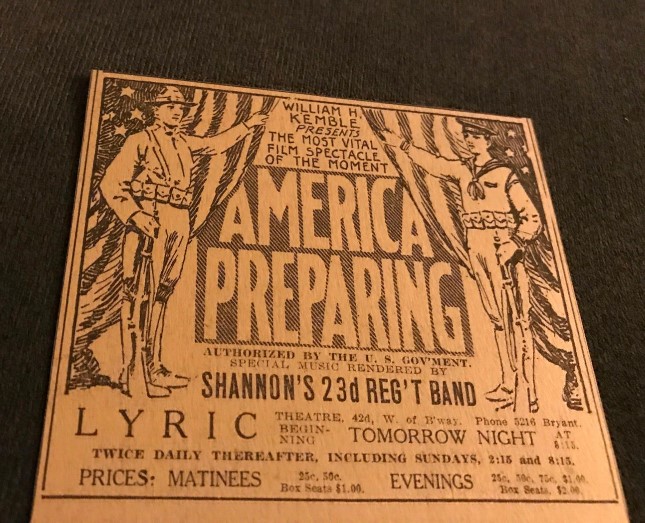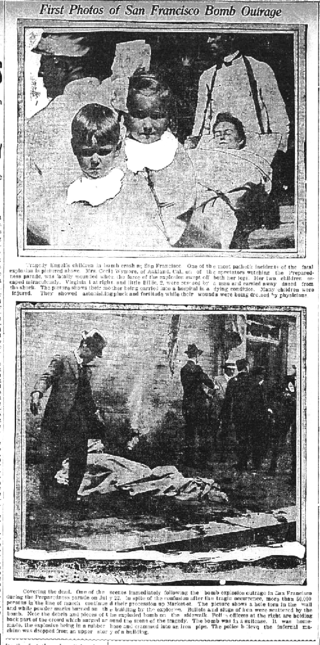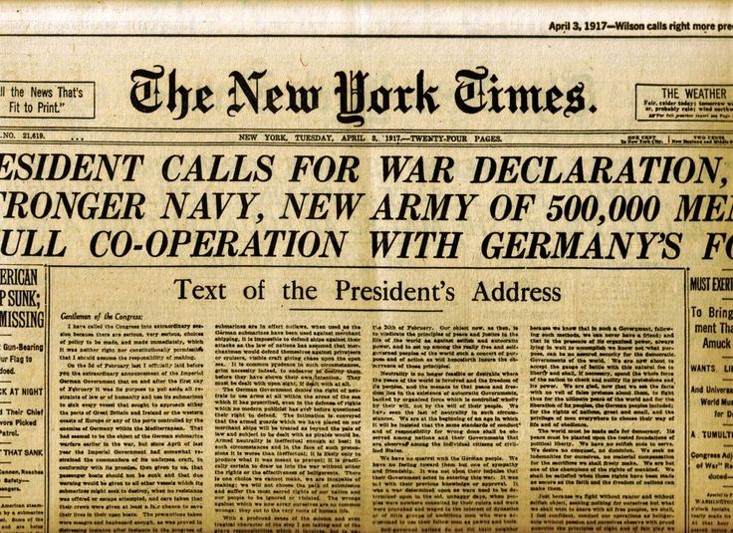2019 is the Centennial of the American Legion. But did you know that there was another organization that claimed that name first? Not only that, but one of the founders of that earlier group was a Roosevelt too. Only this time, it was Colonel Theodore Roosevelt, former President of the United States of America.
That first organization was founded in the wake of the beginnings of the First World War. In August of 1914, Germany began a conflict which would soon entangle most of Europe and eventually the entire globe either directly or indirectly. This savage war was a conflict that would see the evolution of the warfare in ways no one had even dreamed possible on the day it began.
The old ways of fighting land wars involved large armies massing across from each other and having decisive battles filled with strategic movements and flanking maneuvers. The war that emerged was very different. The methods for killing each other became universally more abhorrent with each passing day. New weapons were introduced to break the stalemate that resulted from both sides being overly prepared for the old way of fighting. Gas, machine guns, flying machines, tanks, submarines and on and on. Each new method resulted in catastrophic deaths but little victory for either side.
America was initially outside of the fighting. This was nothing more than the latest little European war between royal families after all and why would we become involved? Many in this country were still grieving the losses from the last great conflict of the Civil War and old men and women warned of not following blindly down the hole of another conflict of this nature.
But within a year, voices on both sides were starting to warn of the dangers of unpreparedness and the dangers of war. Without firing a shot, a war was brewing within America that would eventually lead to our involvement in the conflict.
Men like Teddy Roosevelt banged the drum loudly that our Army and our Navy were little prepared for a war. They felt sure that war would soon come to our country. Books and magazine articles of the time spoke of the Kaisers army invading North America and marching all the way to Chicago, reaping destruction along the way and enslaving an unprepared American population. The answer to the Preparedness men was to form a new group called the American Legion.
1915 – The “First” American Legion
Concerned about the United States’ absence from the world war and the preparedness of its army and navy, magazine editor Arthur Sullivan T. Hoffman and writer Stephen Allan Reynolds founded The American Legion in February 1915, inspired by a letter from reader E. D. Cook
They lobbied government to strengthen the military.
They held a preparedness parade in New York City and made a film “America Prepare”
But not everyone was aligned. Many on the left were strongly opposed to any form of preparedness.
From his book called Preparedness; the American versus the military programme, … (Hull, William I. (William Isaac), 1868-1939.), an anti-preparedness writer cataloged the threat to America by groups like the Legion. From his book:
“The American Legion is the second of the prominent societies formed for, emphasizing and eliminating our un-preparedness. It has arisen to meet the demand that all America’s men and resources available for “prepared-ness” shall be inventoried, classified and kept on tap in case of “need.” Ex-soldiers, ex-athletes, men skilled in every science or art that could conceivably be utilized for military purposes, are being catalogued by the Legion in its self-imposed task of annual and perennial census-taking. The list of trades or professions whose members could be of service in aiding its campaign for preparedness is a long and elaborate one, including at present more than seventy ; and it aspires to include ” the entire reserve force of the nation.” It claims to have enrolled more than 50,000 men within the first six months of its existence. So rapid was its growth and so conspicuous was its campaign that it bade fair to take the place that the Order of the Cincinnati held at its inception in public fear and suspicion. But these fears were modified when it was explained that the Legion was not designed to organize or assemble a body of men uniformed, armed and equipped for military service; but only to procure a list of men available in wartime.
The very rapid increase of the American Legion, and its large public prominence, is a striking illustration of the influence of the war in Europe on the minds of the American people, and of the way in which public sentiment is being exploited. The inception of the Legion was in a few back pages of a fifteen-cent magazine. Attracting the attention of Major-General Leonard Wood, he saw in it a possibility of furthering his military aspirations for the United States, and he gave it his powerful support. The next step was to secure the cooperation of Colonel Theodore Roosevelt, who was evidently not oblivious to the possible political importance of the Legion, and accepted the chairmanship of its executive committee. By means of the clarion calls sent forth by this last-named official, and the enthusiastic aid afforded by General Wood and his aide-de-camp, the Legion is growing apace and aspires to reach soon its 300,000 membership mark.
Aside from the rapid growth and quasi-official relations of the Legion, thoughtful critics have deprecated the oath or pledge which its new members are invited to take, namely, “to serve my country, and to serve her as she says, not as I say.” Again, although the scientific, and not the military, aspects of the Legion have been consistently advertised, one of its purposes is to enroll, in a special branch or department, men who have had training and service in the regular army or navy. This branch is designed to supply the country with “the first reserve, which, in the event of war, could be quickly assembled and put in readiness to follow to the front the first line, consisting of the regular army and the militia.”
The novel and distinctive characteristic of the American Legion, however, seems to be the mobilization of brains and skilled workmen, ranging from wizards of electricity and finance to cowboys.
Closely allied in spirit with the formation of the “scientific branch” of the American Legion is the action taken by various associations of civil, mechanical, electrical, mining and consulting engineers, bridge-builders, electricians, telegraphers and other trained experts in civil life, who have offered to cooperate with the Army War College in Washington by forming reserve corps to be available in case of war. Plans are now being worked out by means of which the Government may be able to avail itself of this offer.”
While men like Hull were agonizing over the growth of the Legion, others were equally concerned about the need for America to be prepared in the obvious conclusion that war was coming.
1 102 April 1, 1916 the Publishers’ Weekly.
Are We a Vulnerable Nation?
For generations we have quietly patted ourselves on the back and declared to ourselves, “We are a self-supporting nation, why should we fear siege?” Yet in a day the face of the whole world changed; and we are confronted with possibilities and probabilities never before dreamed of. Separated by three thousand miles, we are being deprived of one commodity after another which we ourselves have been unable to produce. In a sense, we begin to feel the pressure of blockade. The very paper on which this is printed has advanced 100% because we do not produce necessary raw materials. But that is quite a side issue: Cleveland Moffett has written a book entitled THE CONQUEST of AMERICA. He assumes the role of correspondent for the London Times, and the year is 1921 A.D. It is not a story book, yet lit is the romance of invasion. It begins with the landing of troops on Long Island by the German navy — Germany is used as the invader because her preparedness has been demonstrated as the most complete in the history of the world. From the Eastern end of Long Island, through Brooklyn and New York to Washington and Pittsburgh on the West and Boston on the East, the triumphant Teutons march, preceded by a deadly desolation of shot, shell, gas and liquid fire. Everywhere along the path of the destroyers prominent Americans take part in the defense — many of your town may be mentioned. The book has been submitted to the criticism of and has received the approval of officials high in the Army and Navy. The important section devoted to the war in the air has had similar attention from tacticians and experts. Of course you readily can see the selling qualities, particularly when you realize that it is a well-illustrated book. It is a book on preparedness, but it is much more. It gives an idea of the tragedy of devastation that may easily accrue to us if we fail to heed the warnings. Cleveland Moffett is a genuine patriot. His book rings true in every syllable.
THE CONQUEST OF AMERICA By CLEVELAND MOFFETT
ANARCHISTS IN AMERICA
While the American Legion grew in strength and numbers, the Anarchists also did their part in dividing the country. There was a strong pro-union movement in the early part of the century that was designed to give the working man more of a voice in politics and the work place. Some on the far left were not content with their passive approach and instigated violence as a way to affect change.
One of the most memorable clashes in this war was an even that happened on July 22, 1916 in San Francisco.
History records it as “The Preparedness Day Bombing.”
The Preparedness Day Bombing was a bombing in San Francisco, California on July 22, 1916, when the city held a parade in honor of Preparedness Day, in anticipation of the United States’ imminent entry into World War I. During the parade a suitcase bomb was detonated, killing ten and wounding 40 in the worst attack in San Francisco’s history.
Two labor leaders, Thomas Mooney and Warren K Billings, were convicted in separate trials and sentenced to death, later commuted to life in prison. Later investigations found the trials to have been marred by false testimony, and the men were released in 1939 and eventually pardoned. The identity of the bombers has never been determined.
By mid-1916, after viewing the carnage in Europe, the United States saw itself poised on the edge of participation in World War I. Isolationism remained strong in San Francisco, not only among radicals such as the Industrial Workers of the World (“the Wobblies”), but also among mainstream labor leaders. At the same time, with the rise of Bolshevism and labor unrest, San Francisco’s business community was nervous. The Chamber of Commerce organized a Law and Order Committee, despite the diminishing influence and political clout of local labor organizations. The Preparedness Day Parade was organized by the Chamber of Commerce and the anti-union conservative business establishment.
The Parade
The huge Preparedness Day parade of Saturday, July 22, 1916, was a target of radicals. An unsigned antiwar pamphlet issued throughout the city in mid-July read in part, “We are going to use a little direct action on the 22nd to show that militarism can’t be forced on us and our children without a violent protest.”
1915 San Francisco Street Map
Mooney had been tipped off to threats that preceded the parade and pushed resolutions through his union, the Molders, and the San Francisco Central Labor Council and the Building Trades Council warning that provocateurs might attempt to blacken the labor movement by causing a disturbance at the parade.
The San Francisco Preparedness Day parade of 1916 was the largest parade ever held in the city. The 3.5 hour procession had 51,329 marchers, including 2,134 organizations and 52 bands. Ironically, perhaps, the starting signals were “the crash of a bomb and the shriek of a siren.” Military, civic, judicial, state, and municipal divisions were followed by newspaper, telephone, telegraph and streetcar trade unions. Many of the following divisions came from other cities of the San Francisco Bay Area.
At 2:06pm, about half an hour into the parade, a time bomb in the form of a cast steel pipe filled with explosives exploded on the west side of Steuart Street, just south of Market Street, near the Ferry Building.
Before capping the steel pipe containing the explosive (believed by police to have been either TNT or dynamite), the bomb-maker had filled the pipe with metal slugs designed to act as shrapnel, greatly increasing the bomb’s lethality. Ten bystanders were killed and forty wounded, including a young girl who had her legs blown off. The bombing was the worst terrorist act in San Francisco history. Witnesses differed on where the bomb was located. Some witnesses stated that they saw a man leaving a suitcase against the corner of a building at Market and Stewart streets that contained the bomb, while others, such as Dr. Mora Moss, testified he saw the bomb being hurled or dropped from the roof of a nearby building, rather than being left at the scene.
This movie clip was produced shortly after the bombing. While it is a form of propaganda, like all propaganda, there is some truth mixed in with the gruesome scenes.
https://www.youtube.com/watch?v=CYSVe2I5Fo8
The aftermath of the event was that the guilty men were probably never captured. America continued its march towards war and the Preparedness movement was essentially overshadowed by the American entry into the war in 1917.
The American Legion group did not formally disband but when the soldiers and sailors who founded what we now know as the American Legion came to exist, the old organization ceased to exist.
Looking at history and events of today, it seems that little has changed. There is still a feeling among many Americans that we need to be prepared for enemies that will try and destroy our way of life. The nationalistic feelings remain strong in many parts of the country. Yet modern day anarchists in the form of groups like ANTIFA are evidence that not everyone shares the dreams of a successful America. I have often wondered if there isn’t just some sort of mental defect that causes some people to suspend common sense and try and impose their will on others through violence. The anarchists have never been very far from the surface of America’s life and maybe they always will be. Like the self-destructive reprobates of old, today’s anarchists must be taken seriously and crushed before they cost other innocent lives to be lost.








Reblogged this on Tales of an Asia Sailor.